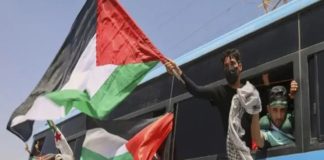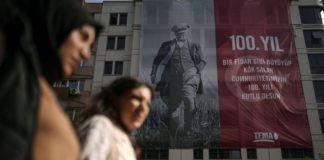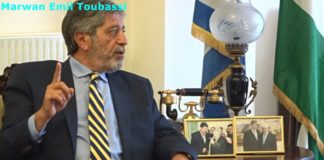Egypt
USA-Israel Awaken the Fury in Muslim Countries—Millions Gather for the Victims...
By Theristes28/06/2025
translated by Christian Haccuria
The West’s nightmare!
This raging river stops at nothing!
Take a look at some of the dozens of rallies—each with millions of people—yesterday,...
Ex-U.S. Diplomat Joins March to Gaza, Says Biden Official Matthew Miller...
June 12, 2025
Activists from around the world are arriving in Egypt ahead of the Global March to Gaza, set to launch June 15, when...
Egypt detains over 200 pro-Palestinian activists ahead of Gaza march: organisers
AFP, Cairo
Jun 12, 2025
Egyptian authorities have detained more than 200 pro-Palestinian activists in Cairo ahead of a planned international march with the stated aim...
Petty-bourgeois nationalism vs. Trotskyism: Brazil’s Workers Cause Party (PCO) defends Erdoğan’s...
By Tomas Castanheira, Ulas Atesci
9 June 2025
This is the first part of a two-part article.
In early April, the Brazilian Workers’ Cause Party (PCO) launched...
En Égypte, les Palestiniens de Gaza sous haute surveillance
Sarah Daoud*
May 20, 2025
Critiquée pour son absence de mobilisation en soutien aux Palestiniens de Gaza, l’Égypte du président Abdel Fattah Al-Sissi rend également la...
Eighty Years After the Defeat of Nazism, Our Palestinian People Too...
by Marwan Emil Toubassi (*)
May 9, 2025
Today, humanity marks May 9th, the 80th anniversary of the victory over Nazism—a victory for which the European...
Thirty five years after the dissolution of the USSR…
May 9, 2025
Russia Victory Day Parade 2025: Red Square Echoes With Foreign Boots—West Watches in Disbelief!
Putin, Xi Jinping and Others in Tears at Eternal...
Remembering Ahmed Adaweyah: The mutinous voice of Egypt’s working class
The folk singer died in late December aged 79, leaving an irreplaceable void in the music industry
By Joseph Fahim
February14, 2025
When was the first time I...
Israel is About to Empty Gaza
The Israeli government, backed by the Trump administration, is laying the groundwork for the full expulsion of Palestinians from Gaza, a move that has...
What are implications of Trump’s Gaza plan, mechanisms to confront it?
Arab analysts and academics discuss the implications of US President Donald Trump's plan to displace Palestinians from the Gaza Strip and strategies to counter...









